For what reasons do chlorophytum leaves turn yellow and how to treat it?

Many home plant lovers have chlorophytum in their collection. It is worth considering in more detail for what reasons the leaves of this plant turn yellow and how to treat it.
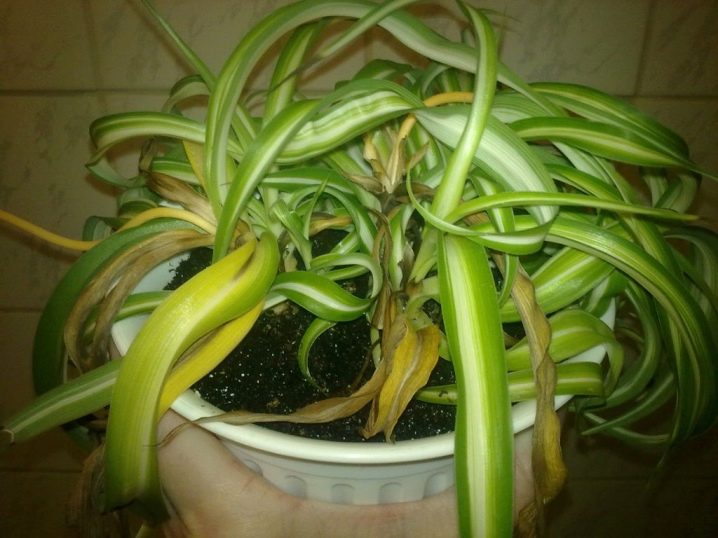
Causes
Chlorophytum is a plant that is easy to care for. Experts note that if the care of a flower is carried out correctly, then it pleases its owners with juicy green leaves. If, for some reason, the conditions for growing a flower change, then this can lead to the fact that it will begin to grow worse. It is worth paying attention to the most common reasons.
- A fairly common reason leading to the leaves turning yellow in this plant is a decrease in the humidity in the room. Dry air is usually a consequence of the inclusion of heating devices.
Many indoor plant lovers note that chlorophytums usually dry only in winter, when the heating is on, while yellowing and dryness are often noted at the edges of the leaves.

- Incorrectly selected temperature is another reason that can lead to discoloration of the leaves. If this figure significantly exceeds +26 degrees, then the flower may begin to dry. Such changes occur due to the fact that the plant in unfavorable conditions begins to actively evaporate moisture. This, in turn, leads to the fact that the cell membranes of the leaves are damaged. This is manifested by the yellowing of the foliage.
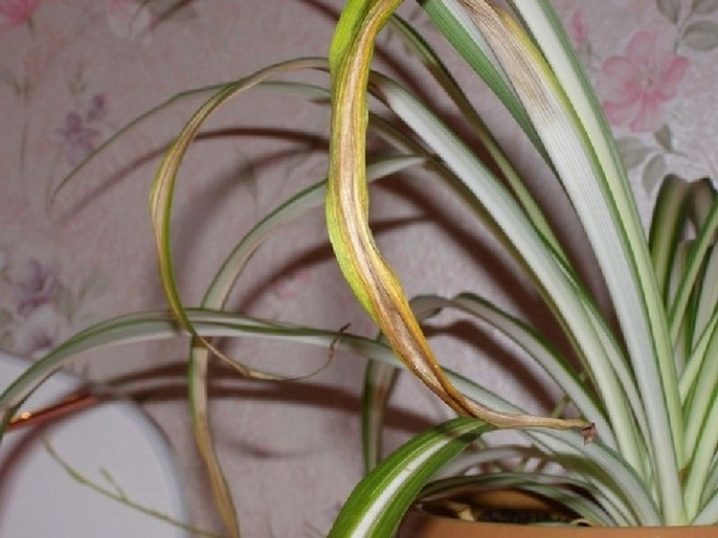
- Insufficient intake of biologically active substances is another possible cause leading to plant damage. Experts note that if initially the soil for this indoor flower was selected incorrectly, then in the future it will not have enough necessary substances for good growth in the stage of active vegetation.
That is why experts recommend in case of yellowing of chlorophytum leaves caused by insufficient intake of biologically active components, to use special additives - top dressing.
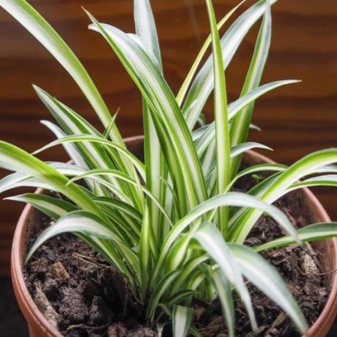
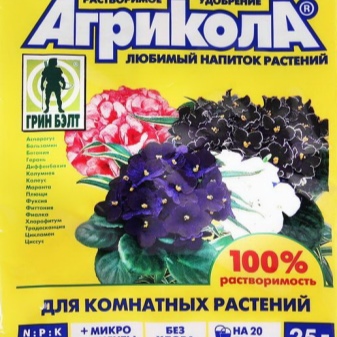
- Untimely transplantation of an adult plant can also cause its leaves to dry out a lot and even change their physiological color. The root system of a grown plant needs enough space. If the pot where the flower grows is small for him, then this can cause damage to the roots. It is recommended to transplant this plant in the spring.

- Watering too much and too often is another possible cause of leaf damage. The abundance of moisture in the soil leads to root damage. If the root apparatus is broken, then the leaves are damaged. Usually this is manifested by the fact that the leaves begin to turn very yellow.
It is recommended to water the plant with water at room temperature. Too cold water can damage the root apparatus, so it is better not to use it for watering.
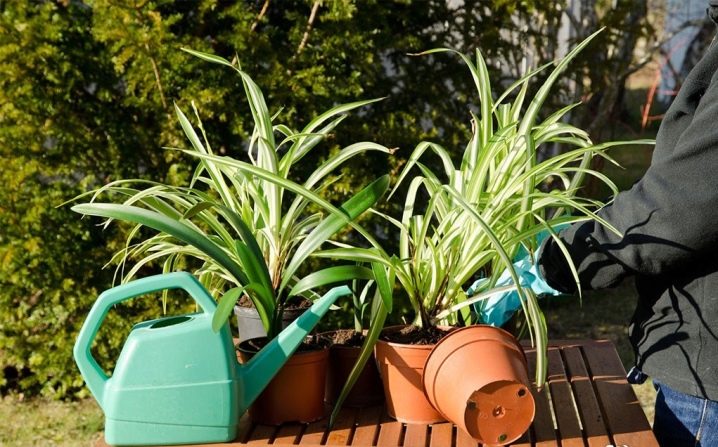
- Various parasites can lead to severe dryness of the leaves and a change in their color. Various parasitic diseases can manifest themselves not only by yellowing of the foliage, but also by the appearance of various dark spots on the leaves. Also, an unusual bloom may appear on the leaves.
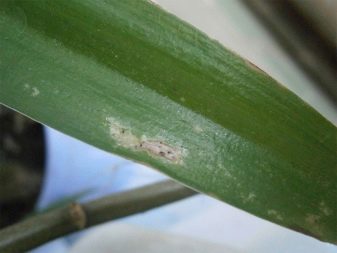
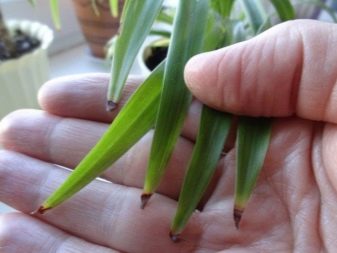
What to do?
A diseased plant should be treated based on the cause of the damage. For example, be sure to adjust the watering first. Pay attention to the indoor temperature. If the room is very dry, it is recommended to increase the humidity.
If root rot is the cause of severe dryness, then urgent treatment is required. To do this, the flower must be transplanted, but the roots must be cut off at home. And also the plant needs to be treated by spraying. For treatment, you can use a solution of the drug "Alirin B".
In case of infection of leaves with bacterial diseases, it is necessary to use special preparations. So, to improve the condition of a flower, you can use the "Gamair" tool. This drug helps not only to improve the appearance of the leaves, but also to eliminate the specific spotting that appears on them due to the infection of the plant with parasites.
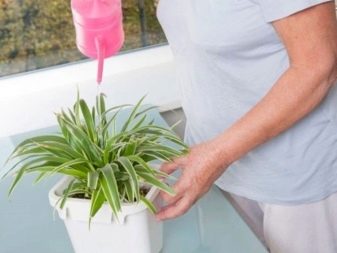
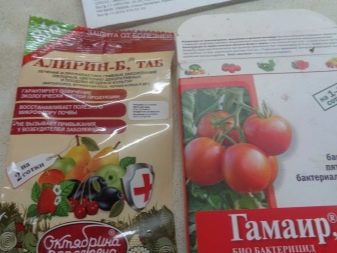
Follow-up care
In order for a flower to delight its owners with green foliage throughout the year, it is imperative to take proper care of it. The microclimate indicators of the room where the plant is located must be within a certain range.
- One of these important indicators is temperature. The plant grows quite well if in the summer in the room where it is located, the temperature is maintained from +21 to +24 degrees. Minor changes in the temperature regime on the life processes of the plant do not have a significant negative effect. However, experts advise not to allow the temperature in the room where this plant is located to drop below +12 degrees in the winter season. Otherwise, the flower may simply freeze and get sick.
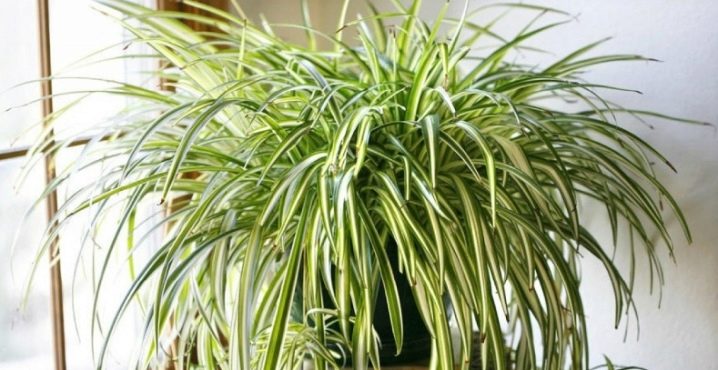
- Humidity is another important indicator that chlorophytum lovers are recommended to follow. While the plant is actively growing, it is desirable that this indicator of the microclimate is 70-75%.
It is recommended to maintain this humidity in the warm season. In winter, it is enough for this figure to be about 50%.
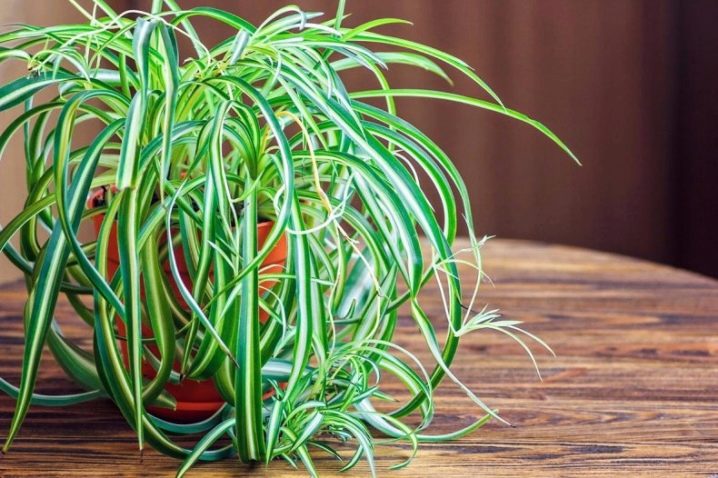
- Houseplant lovers often ask botanical experts about does chlorophytum need any feeding... Experts note that in some cases, for example, when the color of the leaves changes or with poor growth, special combined means to improve the vital activity of plants can be used. Do not do this too often. As a rule, complex feeding to improve the growth of chlorophytum can be used 1-2 times a month.
Liquid complex products for decorative indoor plants or preparations intended for flowering are suitable for a flower.
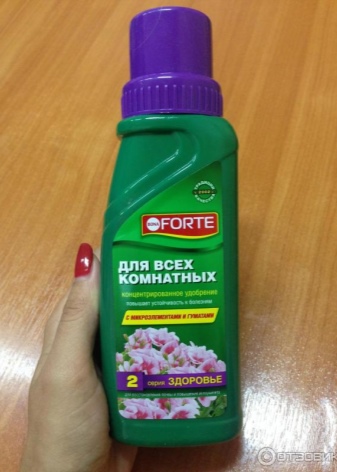
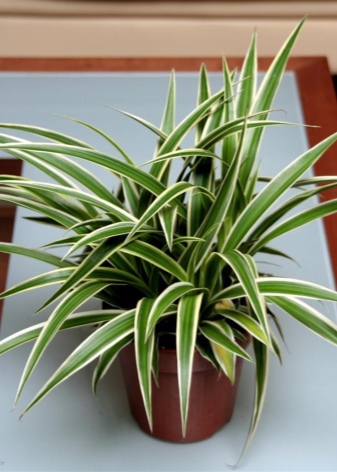
- Chlorophytum is a plant with abundant foliage. For the leaves to remain firm and have a bright color, they need enough moisture. Regular watering is an important part of proper care of this plant.
During an active growing season, experts recommend watering this flower 2-3 times a week. In this case, too much moisture is not required for the flower, as this can damage its root apparatus.
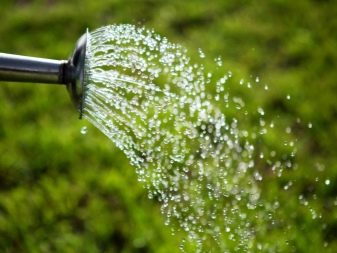
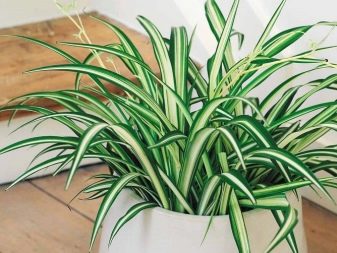
- Chlorophytum is a flower that "likes" to be in fairly lighted places, but the light should be diffused. Active and even excessive sun exposure can damage the delicate leaves of the plant. It is recommended to place this flower in rooms with windows facing south, southeast and southwest. In this case, it is important to be sure to monitor the condition of the flower. If the insolation during the day is too intense, then in this case, it is better to transfer the plant to a less illuminated place in the afternoon.
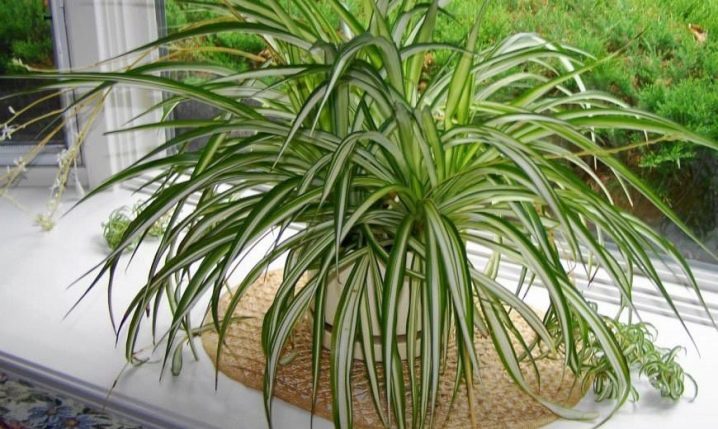
Prevention measures
Preventive measures are very important. They help reduce the risk of various chlorophytum diseases. Lovers of indoor plants who are going to replenish their collection with this plant or have it in it are advised to pay special attention to preventive measures.
- For a plant to grow well, it needs good soil. You should choose the right soil for this particular flower. It is better when buying soil to give preference to a substrate that has neutral acidity.A substrate should be chosen that is perfectly permeable to water and air.
- To reduce the risk of the appearance of various parasites in the substrate, it is recommended to process it before using it for planting or transplanting a plant. So, the soil can be calcined or processed in a water bath (depending on the type of soil substrate).
- An important preventive measure is compliance with all microclimate indicators. It is better to place the plant in a well-lit place, as well as monitor the optimal temperature and humidity in the room. If for some reason the air in the room where the flower "lives" decreases, then it is recommended to think about the possibility of purchasing special household appliances for humidifying the air - humidifiers. The presence of such a device in a house where the air humidity is reduced is a necessity, not a luxury.
- To keep the leaves and roots of the plant in good condition, do not forget about regular watering. It is better to water the flower with water that has been previously settled.
- Do not forget about the transplant. Experts recommend carrying out such a procedure only when needed. Some (especially beginners) indoor plant lovers abuse the transplant. This often leads to the fact that later the flowers begin to grow poorly due to damage to the root system. In order not to damage the plant, it should be transplanted correctly - in compliance with special technology.
- Another important preventive measure is regular plant inspections. To do this, you need to inspect the leaves. Pay attention during such a "home examination" should be on the color and elasticity of the foliage. And also when viewed, you can see pests and parasites on the leaves. If they were found, in this case, it is not worth delaying the treatment. Delayed therapy can lead to the death of the flower.
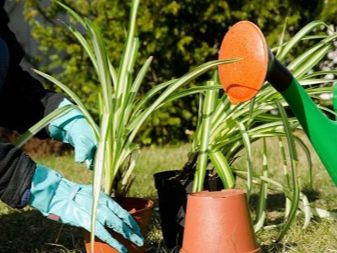
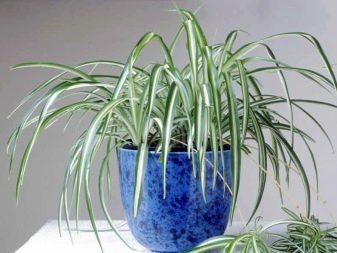
For the problems of growing chlorophytum, see the next video.





























The comment was sent successfully.